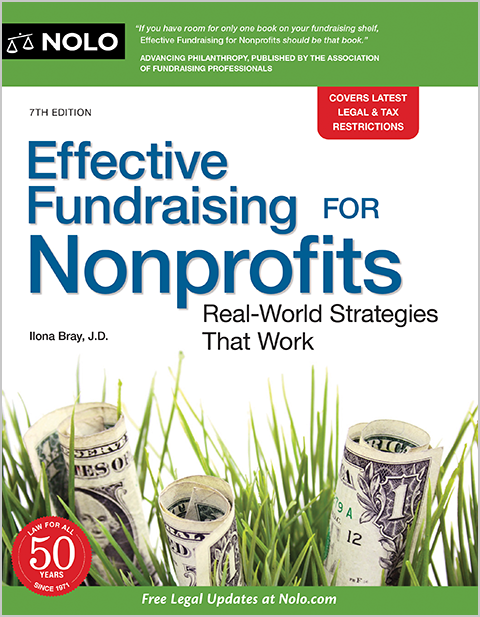Top Nonprofit Fundraising Ideas: Ingenious Methods to Raise Even More Funds
Top Nonprofit Fundraising Ideas: Ingenious Methods to Raise Even More Funds
Blog Article
The Duty of Community Involvement in Nonprofit Fundraising: Structure Lasting Relationships for Sustainable Assistance
Community interaction is increasingly acknowledged as an important component of successful nonprofit fundraising. The approaches and techniques employed to engage communities vary widely, increasing vital concerns concerning efficiency and influence.
Understanding Neighborhood Interaction
Community involvement is a vital part of successful not-for-profit fundraising initiatives. It refers to the methods and activities that organizations use to get in touch with their regional areas, promoting partnerships that are mutually advantageous. Comprehending community involvement includes identifying its complex nature, that includes outreach, partnership, and engagement. Nonprofits should recognize key stakeholders-- such as neighborhood participants, neighborhood businesses, and various other organizations-- to create efficient engagement approaches.
Effective area involvement is based on active listening and responsiveness to the requirements and rate of interests of the area. This procedure involves soliciting comments, comprehending neighborhood dynamics, and making certain that the company's mission straightens with local top priorities. Involving the neighborhood can take different forms, consisting of public conferences, volunteer chances, and collaboration efforts, each made to encourage participation and investment in the organization's objectives.
Furthermore, area involvement should be come close to as a continuous dialogue as opposed to a single effort. By cultivating a comprehensive environment where community voices are heard and valued, nonprofits can construct a solid structure for future fundraising endeavors. Inevitably, a deep understanding of community involvement empowers companies to create genuine links that boost their overall effectiveness and sustainability.
Benefits of Solid Relationships
Solid relationships formed with neighborhood engagement return many benefits for nonprofit fundraising efforts. First and primary, these partnerships foster trust fund and trustworthiness, essential parts in motivating benefactors to contribute. When prospective supporters see a nonprofit proactively included in their neighborhood, they are more most likely to believe in its objective and influence.

In addition, these connections assist in effective interaction. Nonprofits can utilize their links to share tales of impact, updates, and requires, guaranteeing that supporters remain educated and engaged. This open line of interaction not just enhances bonds but additionally encourages word-of-mouth promotion, broadening the nonprofit's reach.
Finally, strong neighborhood connections can draw in brand-new partners and enrollers. Companies and individuals are extra likely to line up with organizations that show significant community participation, providing additional resources and assistance that can considerably improve fundraising capacities. Hence, growing durable relationships through area engagement is indispensable to a nonprofit's long-lasting fundraising success.
Strategies for Effective Interaction
How can nonprofits efficiently involve their neighborhoods to boost fundraising efforts? Routine updates, involving content, and calls-to-action can galvanize area rate of interest and engagement.
2nd, holding community events, such as workshops, volunteer possibilities, or fundraising drives, facilitates face-to-face interaction, enabling nonprofits to display their effect and initiatives. These occasions not only increase funds however also grow connections and allow area members to engage directly with the reason.
Third, applying tailored interaction approaches can improve engagement. Customizing messages to specific benefactor sections based on passions and previous contributions he has a good point cultivates a feeling of belonging and financial investment in the company's objective.
Lastly, creating collaborations with local organizations and community leaders can amplify outreach efforts. Joint initiatives can boost visibility and reliability, demonstrating a collective dedication to the community's wellness. By incorporating these strategies, nonprofits can develop long-term connections that enhance fundraising efforts and drive lasting support.
Determining Interaction Success
While engaging the community is essential for successful not-for-profit fundraising, determining the efficiency of these engagement initiatives is just as essential. Establishing clear metrics enables organizations to evaluate just how well they are linking with their target market and achieving their fundraising objectives. Trick performance signs (KPIs) such as benefactor retention rates, volunteer participation levels, and involvement on social media platforms give concrete information for analysis.

Regularly assessing these metrics makes it possible for companies to pivot their approaches when required, guaranteeing that area engagement continues to be aligned with their overall mission. Moreover, sharing these results with stakeholders promotes transparency and develops count on, motivating additional community participation. Inevitably, a robust dimension structure not only educates future fundraising initiatives however likewise strengthens the connection between the not-for-profit and its advocates, our website preparing for lasting success.
Study in Neighborhood Impact
Countless study show the extensive influence that area engagement can have on nonprofit fundraising success. One notable example is the "Food for Thought" campaign, where a neighborhood food financial institution partnered with institutions and services to host area dinners. These occasions not just raised funds but likewise fostered a sense of belonging amongst individuals, considerably increasing donor retention rates.
One more engaging case is the "Eco-friendly Spaces Task," which involved local residents in the revitalization of city parks. This campaign not just amassed financial backing from regional services yet additionally cultivated a volunteer base that contributed to continuous maintenance and programs. The feeling of possession and satisfaction amongst neighborhood participants equated right into sustained contributions.
In the realm of arts, the "Art for All" campaign effectively involved local musicians and clients to develop joint art installations, resulting in boosted exposure and donations for a regional arts nonprofit.
These instances highlight that when nonprofits focus on neighborhood involvement, they can develop lasting partnerships that boost fundraising initiatives, ensuring lasting assistance and promoting a vibrant area society. Such situations demonstrate that area involvement is not merely an approach however a crucial blog here column of not-for-profit success.
Verdict
In final thought, community involvement is integral to the success of not-for-profit fundraising efforts. By cultivating solid partnerships with regional stakeholders, companies improve depend on and credibility, bring about enhanced benefactor retention and loyalty. Executing effective involvement techniques and gauging their impact makes certain that nonprofits can thrive and adapt. Inevitably, a durable structure of community support not only enhances fundraising potential yet likewise grows a culture of collaboration, essential for accomplishing lasting organizational goals and maintaining purposeful impact.
Nonprofits must recognize essential stakeholders-- such as neighborhood members, regional businesses, and various other companies-- to develop effective interaction methods.

In conclusion, neighborhood interaction is integral to the success of nonprofit fundraising efforts.
Report this page